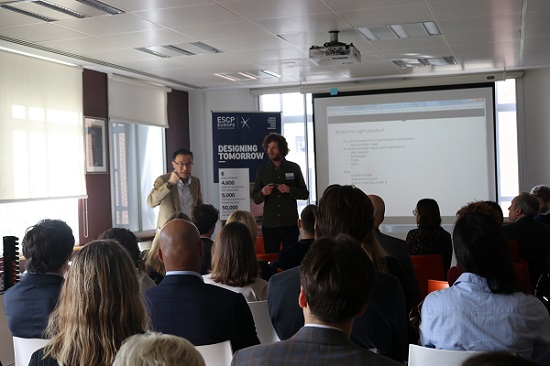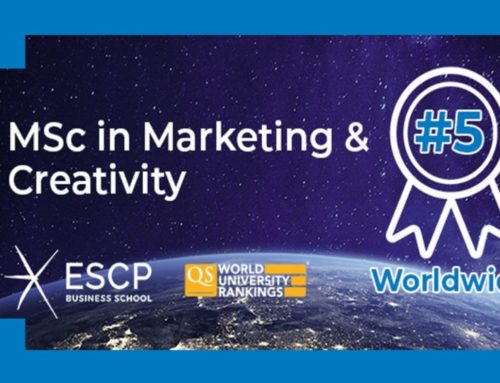AI: Does it really exist?

Artificial intelligence (AI) has the power to change almost everything about the way the business is done today and could contribute up to $15.7 trillion to the global economy by 2030, according to PwC’s ‘2019 AI Predictions. Six AI priorities you can’t afford to ignore‘.
Beyond the general awareness of what AI could offer is a grey space of uncertainty about how to successfully deploy the new systems throughout the organisation so that it does not cease at the Proof of Concept (POC) stage.
ESCP Business School has developed a strong expertise in the domain of artificial intelligence through its cutting edge research and development of two programmes: the Master in Digital Transformation Management & Leadership (MIDITAL) and the Executive Master in Manufacturing Automation and Digital Transformation (EMMA).
The School has also supported a series of exclusive forums on this topic organised by the French Chamber of Commerce in Great Britain (CCFGB).
On 26th March 2019 took place the first session of this year’s Digital Transformation and Innovation Forum organised by the CCFGB and sponsored by ESCP Business School. The CCFGB members and organisations from the construction, retail, trading, legal, finance, consulting, tourism and banking industries met to discuss the latest on the development and applications of AI.
The event was chaired by Christophe Chazot (Group Head of Innovation, HSBC) and Fabrice Bernhard (Founder, Theodo).
Dr Terence Tse, the Associate Professor at ESCP Business School and the Co-founder of Nexus Frontier Tech presented on the theme of demystifying AI in the current business arena. Dr Clément Walter, the Machine Learning Researcher from Sicara, shared a technical case study and showcased examples from across the industry.
Does artificial intelligence actually exist?
Dr Tse explained that the AI does not have intelligence – a machine is merely guessing what a person wants to see.
Indeed, intelligence usually refers to logic, understanding, self-awareness, emotional knowledge, planning, creativity, problem-solving and learning. Machines can do none of these. Machines learn by improving their ability to guess accurately over time and do not learn as we human do. What AI can do remains, for the time being, very limited.
It is important to bear in mind that, when putting AI into business, it can only achieve a narrow and well-defined objective. The technology is best deployed in labour-intensive routine process work.
What cannot be solved by AI?
As AI can only excel in completing specified tasks, we can dispel the common misconceptions that we can create AI strategy, or that AI is going to replace human beings in the job market. We are likely to see only a partial elimination of our jobs, unless jobs consist of only one task.
If AI was to be put in use in current business activities, there should be five rules to follow:
- Be narrow-minded
It is necessary to clearly define what exactly the outcome to be achieved by the machine. AI can only do one task well and no more; therefore, it is important to be clear what the task is. - Weigh the risk
If a machine does the work, a human has to be prepared to give away certain authority and power. It is also important for us to be happy to assume the potential risk that comes with the use of AI technology. - Get the “last mile” right
This is about a back check – the necessity of checking what the machine produced. It is impossible to delegate 100% of the task to AI as it carries too great a consequence if mistakes happen (for example in financial and legal contracts, airport boarding passes, etc.). - Consider less data may mean more
Collecting the right data is much more important than having a lot of data. - Do the necessary homework
Technology alone cannot solve problems. It must be accompanied by the right workflows and processes. Hence, being able to map, amend and implement the right workflows and processes is absolutely critical to the success of putting AI into business use.
AI categorisation
Dr Tse discussed the countries that lead the way in AI tech. In terms of advancement in this area, Europe has remained behind China and the USA. One reason could be that risk aversion within Europeans is still high, and privacy policies (such as the newly introduced GDPR) are safeguarding but also preventing widespread availability of data. Another problem is that Europe has not really fostered any tech titans, unlike the US and China.
AI and the food recognition algorithm
Dr Walter’s work focuses on research and implementation of machine learning and deep learning solutions at production level. He spoke about the use of AI for food image recognition to make a real impact in everyday life, and presented a Sicara’s case study on the creation of a food recognition algorithm to facilitate the workflow in restaurants and canteens.
His work is currently working on the development of an automated canteen cash desk system based on computer vision algorithms. A first pilot has been released, which can currently bill 70% of the served meal trays.
With the first attempts to solve the problem came the Foodvisor in 2015, a B to C application that allowed the taking of a photo of food to tell a buyer if the product was healthy or not and providing a calorie count. With few new players in the market, such as Elior, Sodexo and Eurest, the AI facilities are yet to develop to diversify the proposition, reach more sophisticated food recognition, and provide a faster service within the industry.
Dr Walter’s advice for a better outcome at this stage is to be able to compromise on the performance of the system. The approach to the system should be pragmatic, starting with small amendments and, as the data grows, slowly increasing the area of activity for AI. This could be through setting up two check-out queues in restaurants and canteens for those foods already easily recognisable and those not defined yet to avoid major mistakes.
Both speakers agreed that AI is one of the best tools for increasing productivity and cutting costs for companies as long as the process focuses on systematic, basic tasks that could be tackled by algorithm. Only tasks that can be easily defined and articulated, with clear input and output, should be considered for any companies taking the first step towards using AI. Customisation and integration of AI into the existing legacy IT systems remain the most challenging part of a project.
Watch Dr Terence Tse’s top tips from this session
Empowering young talent
If you would like to become a future digital leader ready to tackle any business challenges related to digital transformation & frontier technologies, we would like to invite you to attend an online info session about the Master in Digital Transformation Management & Leadership that we are hosting on Wednesday, 1st May at 16:00 BST (17:00 CET).
The Master in Digital Transformation Management & Leadership is specifically designed to help participants prepare for key roles in the management of business innovation, allowing them to meet the increasingly important yet complex business challenges related to digital transformation and frontier technologies.
Register your place now to discover:
- The programme curriculum and the key skills, competencies and knowledge you will obtain
- The relevance of the programme’s curriculum to the future job market and why you should consider joining this master
- The projects you will be working on
- What you need to know about the admissions process
- Fees & funding opportunities
Your questions are answered live by the Programme Director and the recruitment team! Book your place at this free online event.
To join, simply sign up here: https://www.careernomics.com/escp/webbooster/participant/privateReg.php?sId=Ma5cab2371178e0m&typ=m





